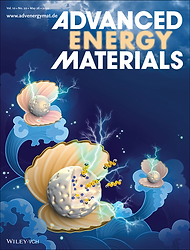The Materials Theory and Modelling group uses cutting edge materials modelling techniques to follow materials properties from bulk to interfaces.
Our research interests are focused on the atomic scale understanding of defect and interface induced materials properties and mechanisms, which we investigate in applications ranging from energy to lithography.

COMPUTATIONAL MATERIALS DESIGN FOR BATTERY APPLICATIONS
Carbon materials are important alkali ion battery anodes. We study a plethora of carbon materials for lithium, sodium, and potassium ion batteries; covering graphene, graphite, and hard carbons. By employing density functional theory, and ab initio molecular dynamics the role of atomic scale structure, defects, porosity among others have been identified. This has allowed us to directly probe the effect of electrode structure and composition on battery performance. By working closely with our collaborators in the Titirici group at Imperial College London and the Drew group at Queen Mary University London, these computational models lead to a revised mechanism for the sodiation and desodiation of hard carbon. Expanding our considerations to the electrolyte anode interface, we probed the performance limiting and enhancing processes at different carbon anode electrolyte interfaces.
_edited.jpg)
KEY PUBLICATIONS - CARBON ANODES
KEY PUBLICATIONS - BEYOND CARBON
AMORPHOUS AND DISORDERED MATERIALS
ReRAM continues to be one of the most promising technologies for memory operations for logic-in-memory operations, where its resistive switching behaviour can be varied by the concentration of oxygen vacancies, cation concentration, doping, and interface composition. Rare-earth binary oxides can have high dielectric constant (both in its amorphous and crystalline phases), low leakage current, large conduction band offset with Si, a large band gap, high breakdown electric field, thermodynamic stability with SiO2, low trapping rates, and low frequency dispersion, all properties that makes them promising ReRAM dielectric. In this project, we have devised a methodology to model amorphous thin films, their crystalline phases, and interfaces.
.jpg)
OPTIMISING AND DESIGNING THE NEXT-GENERATION SOLID OXIDE FUEL CELL CATHODE
For solid oxide fuel cells to become economically and practically viable, their operating temperature needs to be reduced. This requires the identification and development of new cathode materials. In this project, we developed a computational methodology to optimise and identify such a cathode material based on the SmoO3 perovskite material. This work was conducted in the group of Prof Nora de Leeuw at University College London as part of the EPSRC funded project Energy Materials:Computational Solutions.
.jpg)












